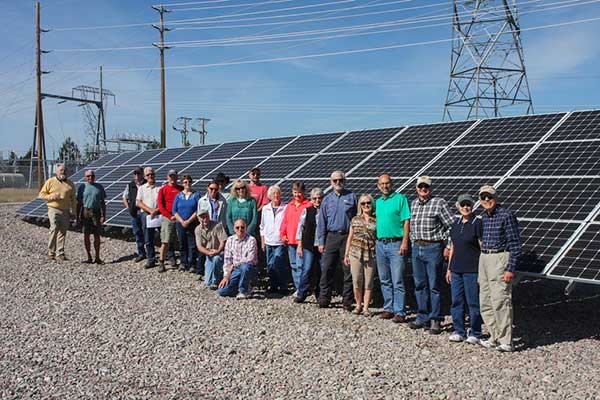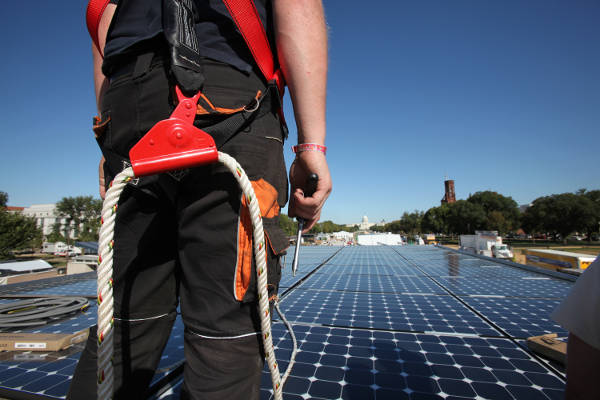The U.S. community solar market is poised to continue growing over the next five years, adding 4.5 gigawatts (GW) of capacity, a 9% increase on previous projections.
Expanded programs and new initiatives will boost development, but interconnection challenges may hamper the sector, according to new research released by Wood Mackenzie, a Verisk business, carried out in collaboration with the Coalition for Community Solar Access (CCSA).
Rachel Goldstein, an analyst with Wood Mackenzie’s solar research team, said: “Community solar refers to local solar facilities shared by multiple community subscribers, such as homeowners, tenants and businesses that receive credits on their electricity bills for their share of the power produced.”
She added: “Since our first outlook, published in July 2021, we have increased our five-year forecast for growth of community solar in the U.S. by 9%.
“Forecasts for New Jersey, New York, Illinois, and Colorado have all been increased thanks to updated and expanded programs and significant climate and clean energy commitments from state governments.”
Jeff Cramer, president and chief executive officer of CCSA said: “The community solar industry continues to experience a significant period of growth as consumers, small businesses and policymakers realize the economic benefits and cost savings community solar delivers.
“We’re just scratching the surface of how much community solar is needed to meet customer demand and state and federal energy goals.”
Goldstein noted that Minnesota and Maryland’s forecasts decreased due to continued siting challenges in both states. The forecasts for Massachusetts and Maine have also been revised downwards due to delays related to interconnection studies.
However, the report states that new community solar legislation in states across the country can open new markets in the coming years.
Goldstein said: “Community solar needs state-level polices in order to thrive. Recently, several states have passed or proposed legislation for community solar programs.”
New Mexico and Delaware both passed legislation in 2021 for new or improved community solar programs. Midwestern states like Pennsylvania, Wisconsin, Michigan, and Ohio have all proposed bills for community solar programs that are working their way through the state legislatures. Implementing these programs would represent a significant increase in forecasts.
In this report, Wood Mackenzie and CCSA collected data on customer acquisition costs and found that costs vary widely, anywhere from $500 to $20,000 per customer. Residential customers with more standardized contracts have more consistent acquisition costs, while unique contracts for larger commercial customers result in a range of acquisition costs.
Residential subscribers still make up the vast majority of community solar subscriptions and are simpler to acquire thanks to standard contracts.
However, anchor tenants, such as large commercial entities and municipalities, receive significant capacity from projects.
The report stressed that interconnection difficulties represent a major challenge facing the community solar sector, and is one that will continue in the coming years.
“As community solar penetrates more markets, it will have to contend with interconnection challenges due to grid congestion and outdated infrastructure,” Goldstein said.
“Today, Maine and Massachusetts are experiencing the complexities that come with interconnection studies and upgrade cost allocation decisions. These processes lead to delays and cause project attrition due to cost uncertainties.
“These grid challenges could be replicated in other states, with some developers believing that the situations in Maine and Massachusetts are harbingers of the interconnection challenges they may see in other markets.”
—
News release by Wood Mackenzie.













Comments